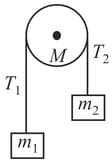What is called a rigid body?
Important Questions on Motion of System of Particles and Rigid Bodies
A uniform rectangular thin sheet of mass has length and breadth , as shown in the figure. If the shaded portion is cut-off, the coordinates of the centre of mass of the remaining portion will be:
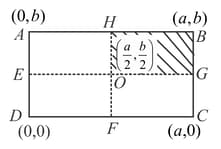
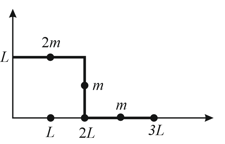
A circular hole of radius is cut out of a circular disc of radius as shown in figure. The centroid of the remaining circular portion with respect to point will be:
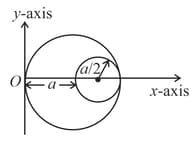
A solid sphere rolls without slipping, first horizontally and then up to a point at height on an inclined plane before rolling down, as shown in the figure below.
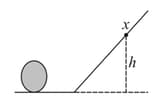
The initial horizontal speed of the sphere is
A square shaped hole of side is carved out at a distance from the centre of a uniform circular disk of radius . If the distance of the centre of mass of the remaining portion from is , value of (to the nearest integer) is :
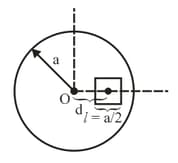
Figure shows a rectangular copper plate with its centre of mass at the origin and side If a quarter part of the plate (shown as shaded) is removed, the centre of mass of the remaining plate would lie at
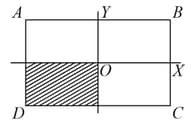
(i) Centre of mass of a body always coincides with the centre of gravity of the body.
(ii) Centre of mass of a body is the point at which the total gravitational torque on the body is zero
(iii) A couple on a body produce both translational and rotational motion in a body.
(iv) Mechanical advantage greater than one means that small effort can be used to lift a large load.
A wheel of radius "rolls without slipping with a speed on a horizontal road. When it is at a point on the road a small bob of the mud separates from wheel at the highest point and touches the point on the road as shown in the figure. Then is (g-acceleration due to gravity)
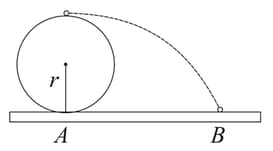
A rigid ball rolls without slipping on a surface shown below.

Which on the following is the most likely representation of the distance travelled by the ball vs time graph?
On a pulley of mass hangs a rope with two masses and tied at the ends as shown in the figure. The pulley rotates without any friction, whereas the friction between the rope and the pulley is large enough to prevent any slipping. Which of the following plots best represents the difference between the tensions in the rope on the two sides of the pulley as a function of the mass of the pulley?
